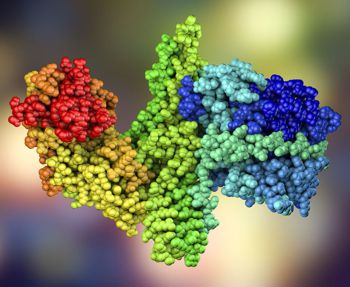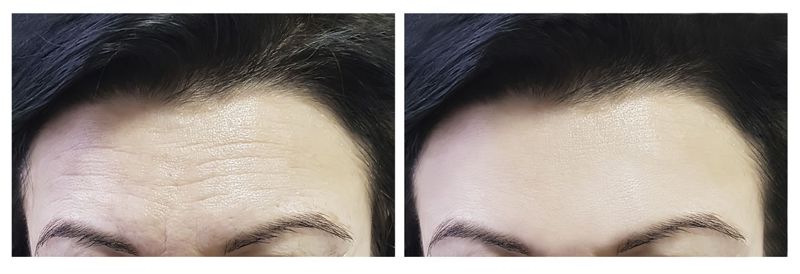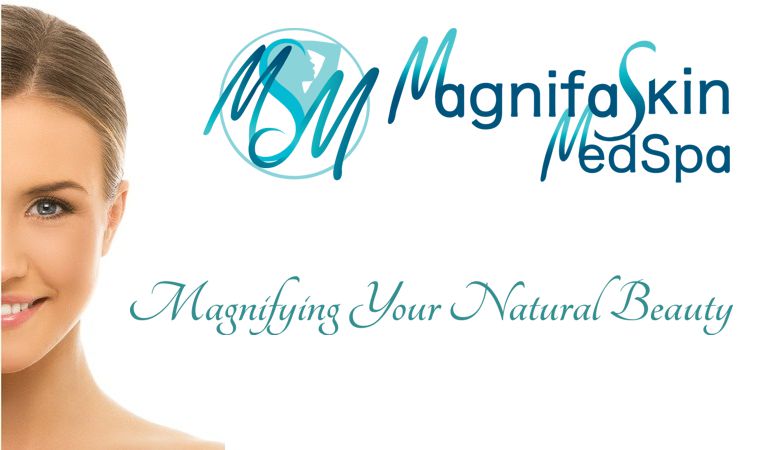Botox For Men
The Science of Rejuvenation

BOTOX
There’s no need to look older than you feel. The lines and tiny wrinkles on our faces, around our eyes and mouth and on our forehead that are often called frown lines or crow’s feet, are in fact medically referred to as ‘dynamic wrinkles’ and they’re the result of a lifetime of smiling, frowning, laughing…living. At MagnifaSkin MedSpa, we can smooth these lines, giving you back the face you deserve and erasing years from your appearance.

Be the first to know about new Specials, and blog posts with valuable free information on skin care, beauty and wellness. Sign up below and you'll receive an email notice of new specials as well as new posts. You can unsubscribe at any time.

The last two decades have seen many new tools for fighting the effects of aging. One of the first of these, and still the most popular is Botox. There are over 6 million Botox treatments administered every year!
Produced by Allergan, Botox was approved for medical use in the late ’80s for conditions like uncontrolled blinking (blepharospasm) and lazy eye (strabismus). By blocking the nerves connected to these muscles, Botox is able to give patients relief from these conditions by stopping the muscle contractions. In 2002, Botox was approved for cosmetic procedures. Originally Botox was marketed almost exclusively to treat forehead wrinkles. Today, however, Botox is used for a wide range of treatment areas, smoothing wrinkles and lines by simply stopping the muscle contractions that cause them.
What's Covered in this Article
- What is Botox Exactly?
- How Does it Work?
- What Kinds of Lines and Wrinkles Can Botox Treat?
- The Hidden Benefits of Botox
- How Long Does a Treatment Last?
- Side Effects
- What to Expect During the Procedure
- How Often Will I Need Treatments?
What is Botox Exactly?

The Clostridium Botulinum bacteria occurs commonly in nature, but the toxins that are derived from it, which have a variety of medical uses, are almost always produced in laboratories under carefully controlled conditions.
Botox is Allergan’s brand name for a toxin which is produced by Clostridium Botulinum, which is a bacteria. You may have heard of botulism, a very dangerous form of food poisoning. The same bacteria produces botulism. Don’t let that worry you though. Botox is completely safe. While the Clostridium Botulinum bacterium is responsible for both types of toxins, the toxin used in Botox is different than the one that causes food poisoning. This bacteria, in fact, produces a number of different toxins, and each has a different scientific or medical use.
The bacteria itself is quite common and is found in soil, lakes, and forests. You might think this means you’re in danger of being infected by one of the dangerous toxins just by being outside but in fact there’s nothing to worry about. While the Clostridium Botulinum bacteria is found in many places, it only produces toxins under very special conditions which seldom occur in nature. Most of the time, these toxins are produced on purpose in laboratories.
How Does it Work?
We already know that Botox works by blocking the nerve signals to the muscles where the injection occurs, but how exactly? Is it safe? Are there side-effects? And how long do the effects last?
In order for our nerves to send a signal to our muscles to contract, they have to release a chemical called acetylcholine, which is one of our bodies’ natural neurotransmitters. The acetylcholine attaches to receptor molecules on the muscle cells and this causes the muscles to contract. The injected Botox blocks the release of acetylcholine. No acetylcholine equals no muscular contraction.
What Kind of Lines and Wrinkles Can Botox Treat?
Generally, we develop two different kinds of lines and wrinkles on our face. The first could be thought of as ‘passive’ lines. These lines are always there and result from the loss of collagen, elastin, and hyaluronic acid as we age. This affects the underlying supportive tissues causing them to wrinkle. Botox can’t treat these although dermal fillers such as Juvederm, Restylane and Revanesse can.
The second type are ‘active’ lines. These are lines which are caused by the contraction of facial muscles. They are there when those muscles are active, and absent when the muscles are at rest. Examples are forehead wrinkles, frown lines (also called glabellar lines), crow’s feet, bunny lines (lines horizontally across the bridge of the nose), and lines around the mouth and nose. All of these can be effectively treated by Botox.

Before and after treatment of forehead wrinkles with Botox.
The ‘Hidden’ Benefits of Botox
Remember those ‘passive’ and ‘active’ lines above? It’s not quite that simple. You see, over time active lines and wrinkles develop into passive ones. This happens because the creases that the muscular contractions cause in these areas make the collagen and elastin work harder to ‘spring back’ the skin. This means that these important compounds break down faster in these areas. So, forehead lines in our 30’s that were only visible when we raised our eyebrows, for example, become permanent or passive lines by our 40’s or 50’s.

Botox treatments are for men too. Anyone who has unwanted forehead lines, crow's feet, bunny lines, periorbital lines (around the mouth) or any other kind of 'active' line or wrinkle that results from muscular contractions can see years erased with a quick and nearly painless Botox treatment
The sooner we start using Botox treatments the fewer muscular contractions these areas are subjected to, and the longer it takes for those lines to become passive lines. We don’t like to use the word ‘permanent’ for these lines because, as already mentioned above, they are treatable with fillers. But it’s still beneficial to delay the development of these lines for as long as possible.
Most of us will eventually need a comprehensive treatment plan that includes a mixture of Botox and fillers such as Restylane, Juvederm or Revanesse. A plan such as this will address both active and passive lines.
How Long Does a Botox Treatment Last?
The short answer is ‘3 to 6 months’. The longer answer is ‘it depends’. The actual time a given injection will last is dependent upon a number of factors. First, where is the injection? If it’s in an area where muscles around those affected by the injection can still cause movement in that area, such as the around the mouth, then the Botox will be flushed away sooner simply due to increased circulation in that area resulting from the extra movement. Injections to the forehead tend to last longest because there aren’t any really active muscles surrounding the area so the forehead stays relatively still.
Other factors are your overall activity level and genetics. If you are very active this means your metabolism is running in a higher gear than most people. This might mean that the effects will wear off sooner. This once again is simply due to increased circulation, in this case over your entire body, but that effects the treated areas as well. Genetics also plays a role. Some people just retain the Botox longer than others.
What About Side Effects?
There are almost no side effects from a Botox injection. You may experience some swelling and bruising in the treated area but this is a result of the injections themselves, not the Botox. This should heal in a few days. If not, we have effective treatments to speed the healing of bruises. In rare cases, the patient will experience headaches following the injection but these usually clear up within 24 to 48 hours.
A very small percentage of patients who receive injections in the forehead or around the eyes may develop eyelid drooping. This will usually go away within 3 weeks. It’s caused by the Botox moving into the eyelid and that’s usually the result of rubbing the treated area. It’s important not to do this during the first 12 hours following treatment. You also shouldn’t lay down for at least 4 hours, as this can cause movement of the Botox as well.
What Should I Expect During the Procedure?

The effects of regular Botox treatments as we age can be quite dramatic. Not only does Botox erase active wrinkles for months, but by keeping these muscles relaxed we may delay the onset of permanent, or passive, wrinkles, sometimes by decades.
The procedure is quick and discomfort is minimal for most patients. We use very fine needles and the injections are quite small. The sensation is often described as pressure, stinging or burning rather than the piercing pain that most expect from a needle. Some patients feel nothing at all.
You should avoid alcohol for at least one week prior to treatment, and aspirin (which can act as a blood thinner) and anti-inflammatory medications should be stopped at least two weeks prior. This will reduce bruising.
How Often Should I Get Treatments?
As your body flushes the Botox away, you’ll notice a gradual lessening of the effects and a reappearance of lines in the treated area. This should be the time when you contact us to make another appointment. As already mentioned above, this time will vary by individual and treatment area.

